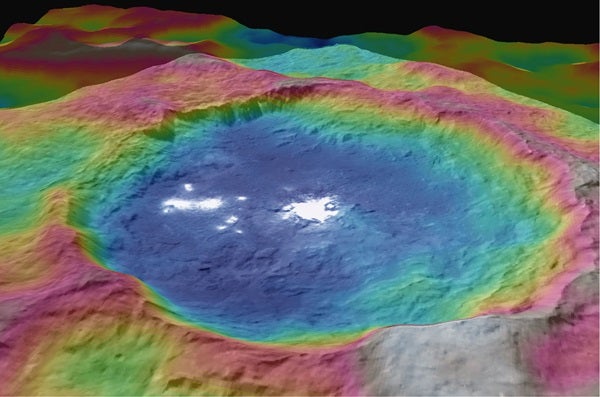Ceres’ pockmarked surface is riddled with craters like those seen at Saturn’s icy moons. “The features are pretty consistent with an ice-rich crust,” said Dawn planetary geologist Paul Schenk of the Lunar and Planetary Institute in Houston in a press statement. The spacecraft has mapped the heights of surface features like craters and mountains.
Bright spots on the dwarf planet’s surface also have mystified planetary scientists. These reflective regions first came into view at the beginning of 2015 and have since resolved into a multitude of spots. They sit within Ceres’ northern Occator Crater, which spans 57 miles (92km) and is 2.5 miles (4km) deep. Researchers at first believed they were ices or salts, but bad luck repeatedly stymied their efforts to gain spectra of the mysterious spots. Based on the reduced reflectivity of the spots, however, the consensus is turning to salt.
In August, Dawn had reached its penultimate orbit, circling Ceres from 910 miles (1,470km) out. A few months later, the spacecraft will have transitioned to its final science orbit, at just 230 miles (375km) above the surface.
In addition to mapping the surface and measuring the heights of the mountains and craters on Ceres, Dawn is working to learn about the composition of materials on the asteroid’s surface. The spacecraft also is measuring how different locations on Ceres pull with more or less gravity. The answers will let scientists map the world’s gravity and learn how the dwarf planet’s rocky interior is distributed.










